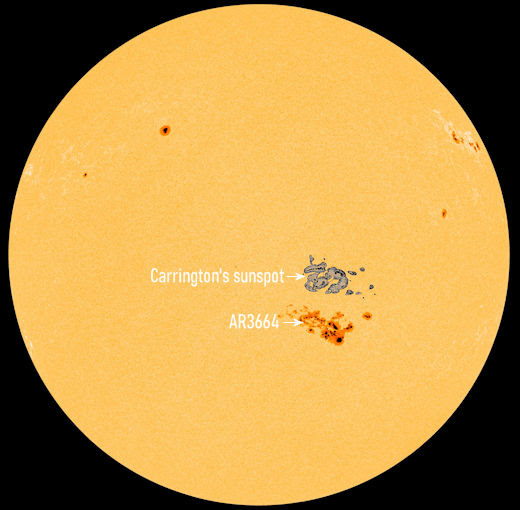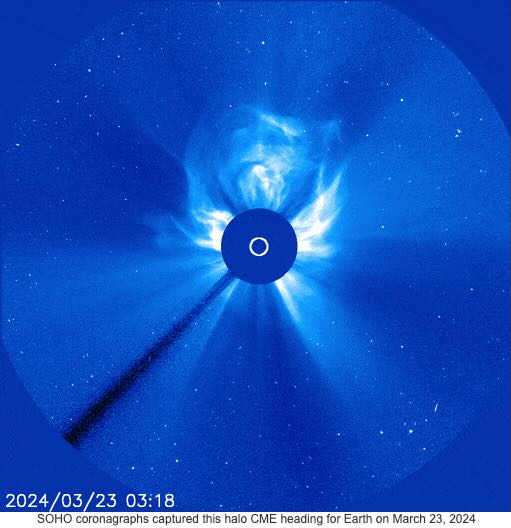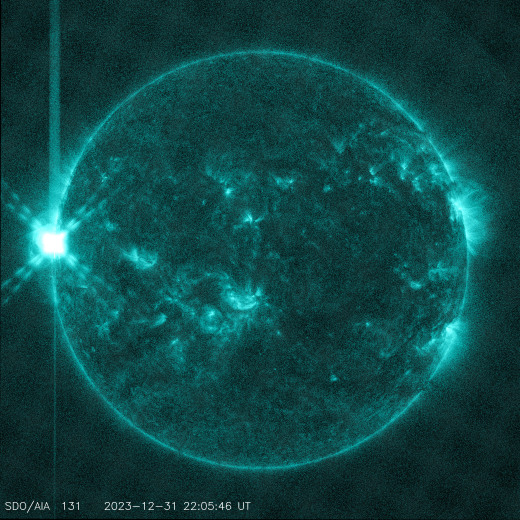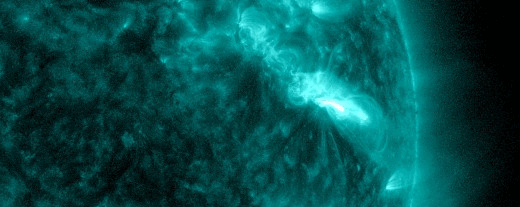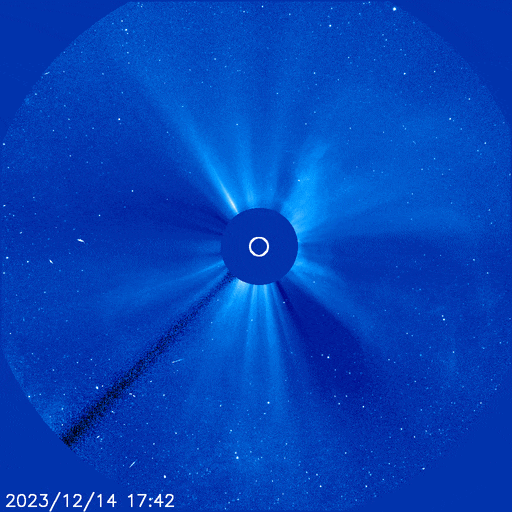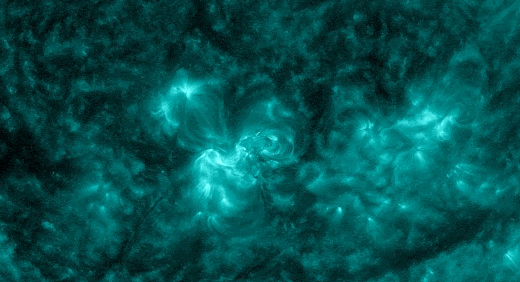Many thanks to SWLing Post contributor, Troy Riedel, who shares the following item from Spaceweather.com:

A CME heading straight for Earth on Oct. 28, 2003. The source was an X17-flare in the magnetic canopy of giant sunspot 486. Image credit: SOHO. Movie
Imagine waking up to this headline: “Half of Earth’s Satellites Lost!” Impossible? It actually happened during the Great Halloween Storms of 2003.
Turn back the clock 20 years. Solar Cycle 23 was winding down, and space weather forecasters were talking about how quiet things would soon become. Suddenly, the sun unleashed two of the strongest solar flares of the Space Age–an X17 flare on Oct. 28 followed by an X10 on Oct 29, 2003. Both hurled fast CMEs directly toward Earth.
Traveling 2125 km/s and 1948 km/s, respectively, each CME reached Earth in less than a day, sparking extreme (G5) geomagnetic storms on Oct. 29, 30, and 31, 2003. Auroras descended as far south as Georgia, California, New Mexico, Arizona, Texas, and Oklahoma: photo gallery.
Onboard the International Space Station, astronauts took shelter in the hardened Zvezda service module to protect themselves from high energy particles. Meanwhile, airline pilots were frantically changing course. Almost every flight over Earth’s poles detoured to lower latitudes to avoid radiation, costing as much as $100,000 per flight. Many Earth-orbiting satellites experienced data outages, reboots and even unwanted thruster firings. Some operators simply gave up and turned their instruments off. [Continue reading at Spaceweather.com…]

